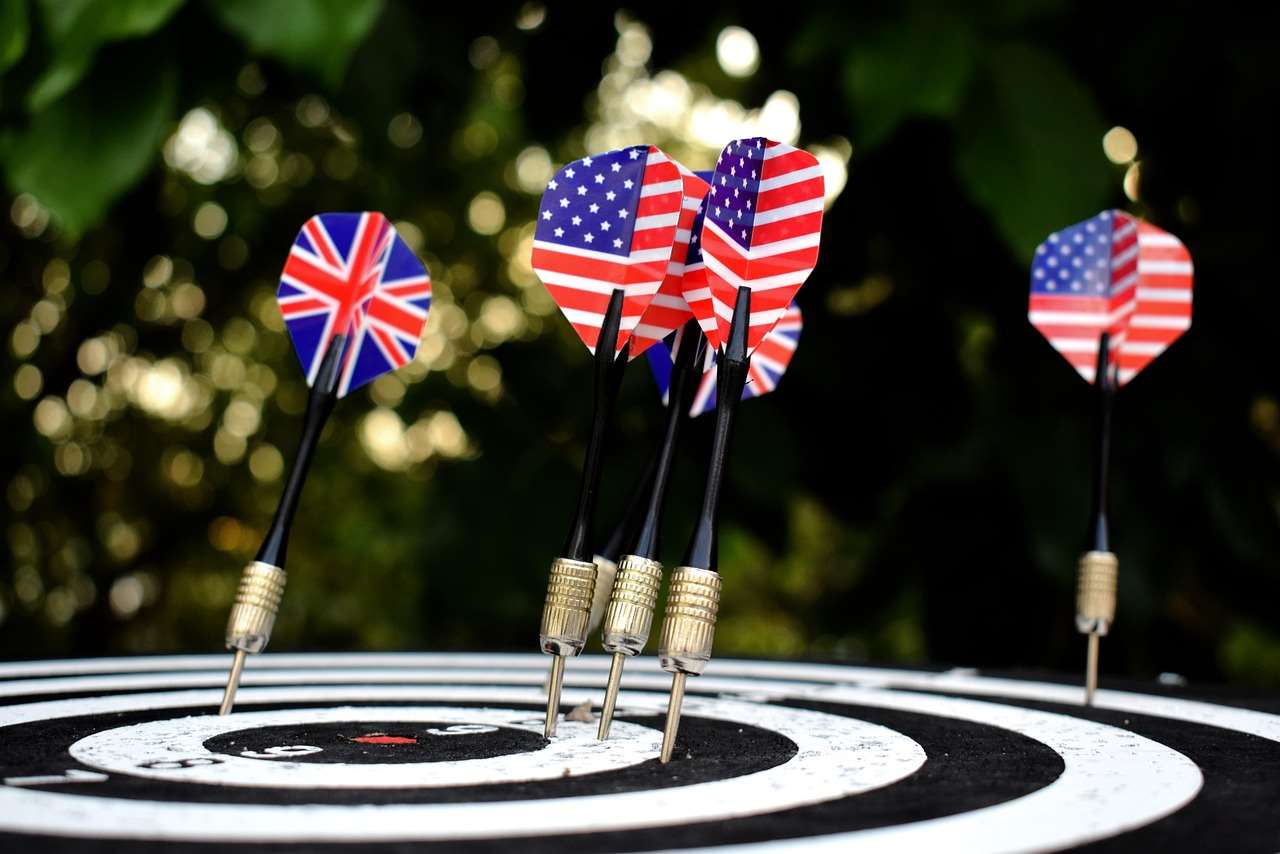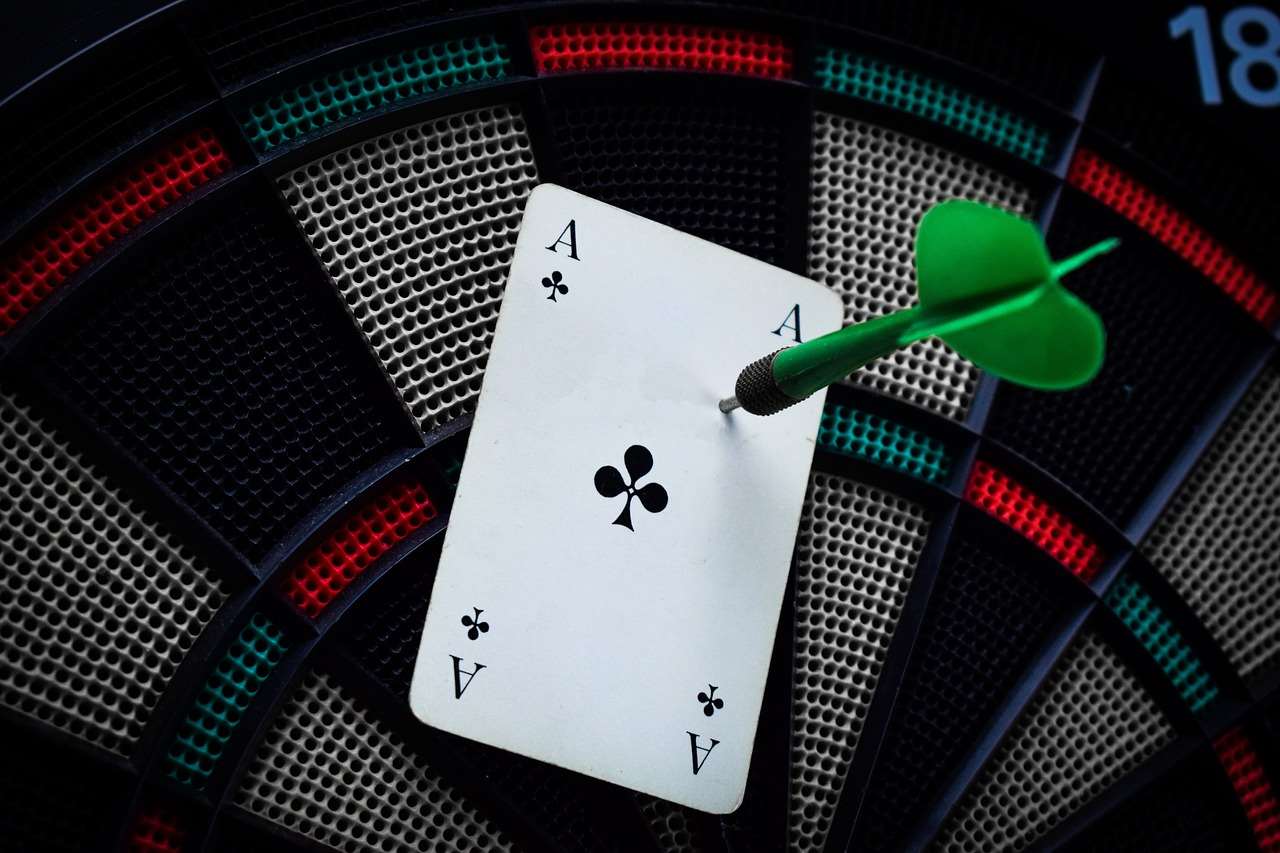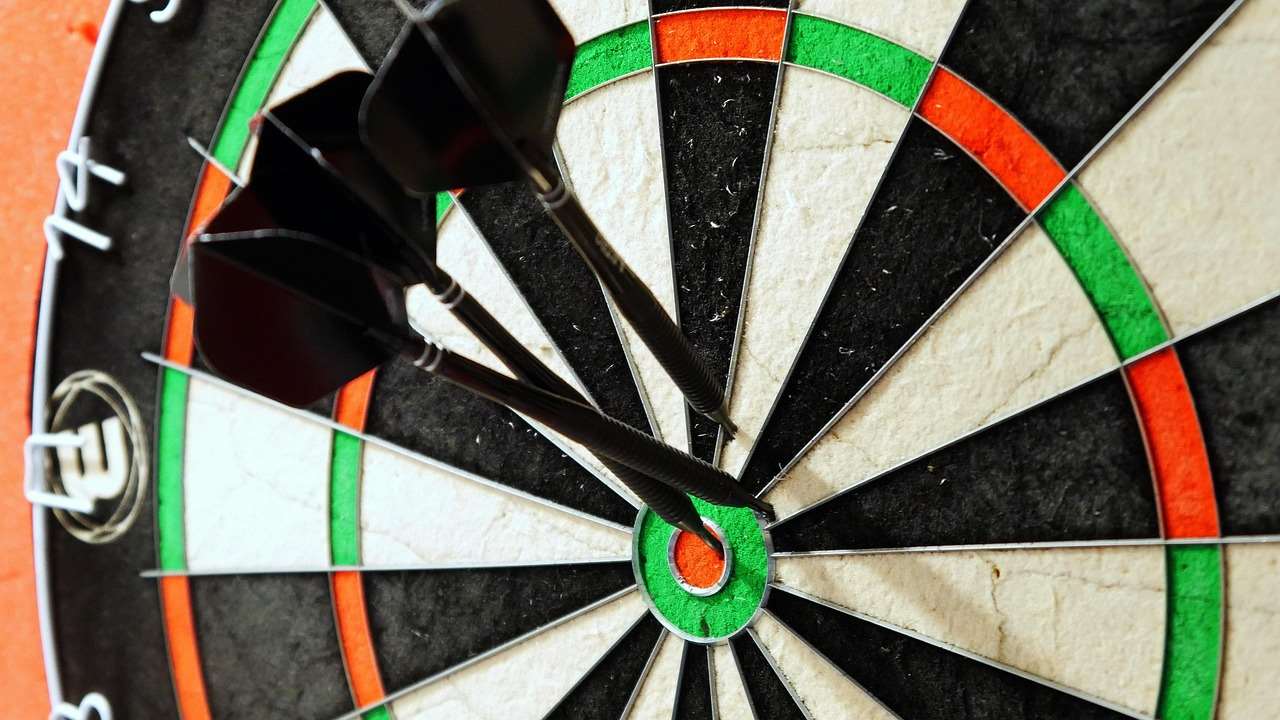Mastering darts double in double out is crucial for serious players aiming to improve their game and compete effectively; it adds a layer of strategy and precision to the standard 501 format. This article will explore the nuances of this challenging format, offering strategies and tips to help you consistently hit those crucial doubles and elevate your darting skills.
⚠️ Still Using Pen & Paper (or a Chalkboard)?! ⚠️
Step into the future! The Dart Counter App handles all the scoring, suggests checkouts, and tracks your stats automatically. It's easier than you think!
Try the Smart Dart Counter App FREE!Ready for an upgrade? Click above!
Understanding Darts Double In Double Out
The phrase “darts double in double out” refers to a specific variation of the classic 501 darts game. In the standard 501 game, players begin with 501 points and reduce their score to zero by throwing darts. However, double in double out adds significant complexity because:
- Double In: A player must begin their leg by hitting a double. Only after successfully hitting a double does their score start to reduce.
- Double Out: To win the leg, a player must end with a dart landing on a double. Reaching exactly one point remaining is not a winning position; you need to land a double to finish.
This format dramatically increases the strategic element. Players must be proficient at hitting doubles consistently, not just for finishing but also for starting. It’s a true test of accuracy and mental fortitude.

Strategies for Darts Double In Double Out
Excelling in darts double in double out requires a focused strategy. Here are several approaches to consider:
Choosing Your Opening Double
The double you choose to start with can significantly impact your game. Common choices include:
- Double 20 (D20): A popular choice due to its high score potential if followed by a treble 20. However, missing inside leaves you with a large number and potentially under pressure to start.
- Double 16 (D16): Another favorite because of the relatively easy setup for checkout patterns.
- Double 12 (D12): A more conservative option, often chosen for its proximity to the single 12 and treble 12, giving you more options if you miss the double.
- Double 1 (D1): Some players use this if they struggle with other doubles, as it’s often perceived as mentally “easier.”
Experiment to find which double suits your throwing style and mental comfort level best. Think about the psychology involved and how darts is played.
Setting Up Checkouts Effectively
Knowing how to set up potential checkout combinations is essential. Aim to leave yourself with a manageable double after each visit to the oche (dartboard). Common checkout routes to practice include:
- 170 Checkout: T20, T20, Bullseye
- 160 Checkout: T20, T20, D20
- 100 Checkout: T20, D20 or 20, T20, D10
- 60 Checkout: T20, D0
Understanding these standard checkouts makes the calculation process much faster during a game. Use a Practice darts app with scoring to learn common outs.

Practicing Your Doubles
Consistent double hitting is the cornerstone of success in darts double in double out. Dedicate specific practice sessions solely to hitting doubles. Here are some effective drills:
- The Round the Clock Doubles: Start at D1 and work your way around the board to D20.
- The Double In/Out Challenge: Begin each turn by trying to hit a designated double. After hitting it, throw your remaining darts at another target number. This simulates the pressure of starting a leg. Then practice finishing on different doubles.
- Targeted Double Practice: Identify your weakest doubles and focus on those specifically.
Regular and focused practice will build your confidence and accuracy. This is especially useful for when you check out on what darts tournament is double in.
Dealing with Pressure
The double in double out format significantly increases the pressure on players. Here are some tips for managing it:
Mental Preparation
Visualization can be a powerful tool. Before a match, visualize yourself hitting those crucial doubles. This helps build confidence and reduces anxiety. Develop a pre-throw routine to help focus and calm your nerves.
Staying Positive
It’s easy to get frustrated when you miss a double, especially a crucial one. However, dwelling on mistakes will only make things worse. Instead, focus on the next dart and maintain a positive attitude. Remember why you enjoy playing and try to relax.
Tactical Nerves
Sometimes, even experienced players struggle with “dartitis” (darting yips). If you find yourself struggling with your throw, try shortening your backswing or focusing on a specific point on the dartboard. Consider your darts scorekeeper online practices.
Equipment Considerations
Your equipment can also influence your performance in darts double in double out.
Dart Weight and Grip
Experiment with different dart weights to find what feels most comfortable and gives you the best control. Also, experiment with different grips. Some players prefer a firm grip, while others prefer a looser one. The key is to find a grip that feels natural and allows you to release the dart consistently.
Dart Flights and Stems
The dart flights and stems affect the dart’s trajectory. Shorter stems and smaller flights generally result in a faster, flatter trajectory, while longer stems and larger flights provide more stability. Experiment to see what works best for your throwing style. Perhaps consider designs such as dart flights harry potter, or dart flights tottenham.

Dartboard Quality
Invest in a high-quality dartboard made of sisal fibers. These boards offer better durability and fewer bounce-outs, which are crucial for consistent play.
Advanced Strategies for Darts Double In Double Out
Once you’ve mastered the basics, consider these advanced strategies to further improve your game:
Opponent Analysis
Pay attention to your opponent’s strengths and weaknesses. Do they favor a particular double? Are they consistent under pressure? Use this information to adjust your strategy accordingly. For example, if you know your opponent struggles with D16, try to leave them with that double to finish.
Strategic Blocking
If your opponent is on a double, consider throwing at the same number but on the single. This can disrupt their rhythm and put them off their game. However, be careful not to leave them with an easier shot.

Varying Your Approach
Don’t become predictable. If you always go for the same doubles, your opponent will eventually anticipate your moves. Mix things up and keep them guessing. This strategic variability enhances your game beyond just hitting the target.
Conclusion
Mastering darts double in double out requires a combination of skill, strategy, and mental fortitude. By understanding the nuances of the format, practicing consistently, managing pressure effectively, and optimizing your equipment, you can significantly improve your game. Embrace the challenge, stay focused, and remember to enjoy the process. Start practicing your doubles today and watch your darting skills soar!
Hi, I’m Dieter, and I created Dartcounter (Dartcounterapp.com). My motivation wasn’t being a darts expert – quite the opposite! When I first started playing, I loved the game but found keeping accurate scores and tracking stats difficult and distracting.
I figured I couldn’t be the only one struggling with this. So, I decided to build a solution: an easy-to-use application that everyone, no matter their experience level, could use to manage scoring effortlessly.
My goal for Dartcounter was simple: let the app handle the numbers – the scoring, the averages, the stats, even checkout suggestions – so players could focus purely on their throw and enjoying the game. It began as a way to solve my own beginner’s problem, and I’m thrilled it has grown into a helpful tool for the wider darts community.